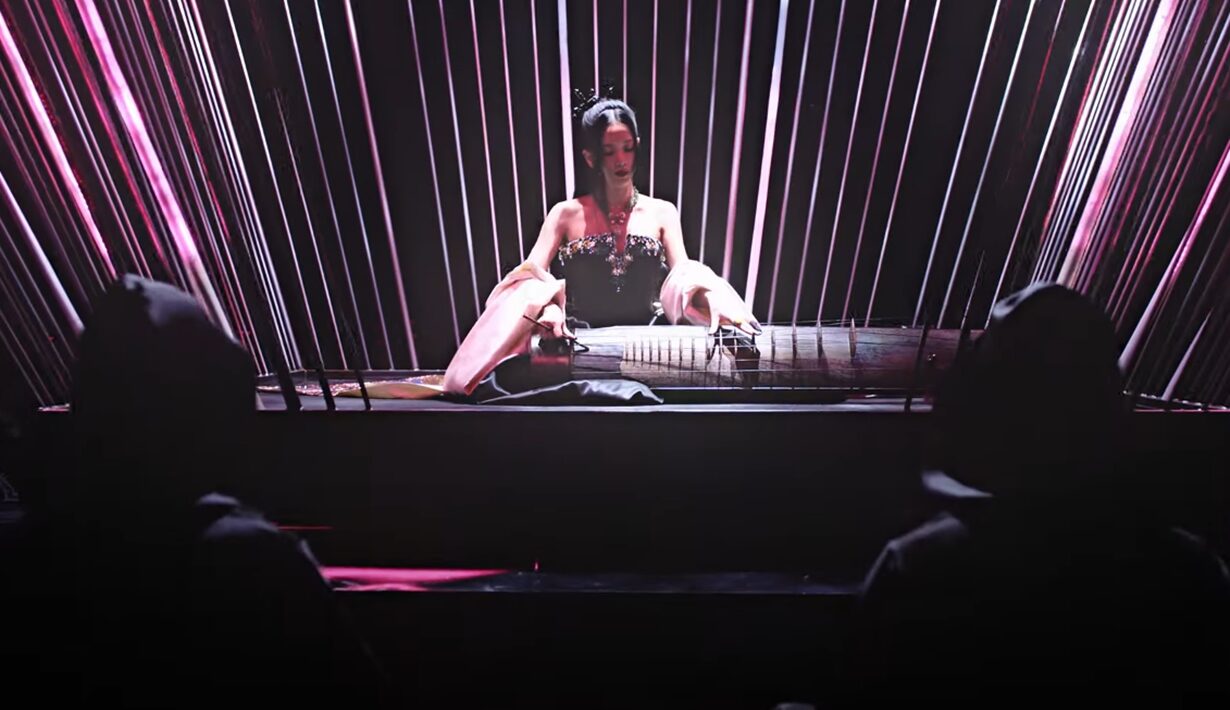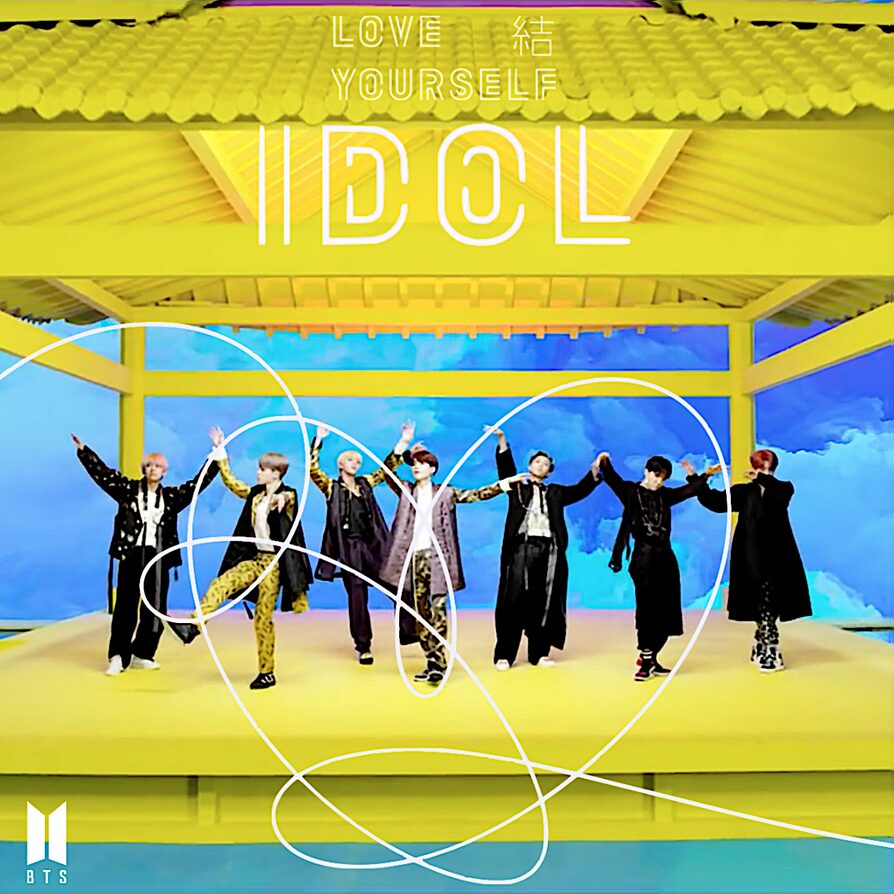Introduction
K-Pop’s Fusion of Tradition and Modernity: K-Pop, with its infectious melodies, synchronized dance routines, and polished visuals, has become a global phenomenon. But K-Pop isn’t just about replicating a formula. It’s a genre that thrives on innovation, constantly pushing boundaries and incorporating unexpected influences. One of the most fascinating aspects of K-Pop is its ability to seamlessly blend traditional Korean musical elements with modern sounds, creating a truly unique listening experience. Imagine a song that starts with the haunting melody of a gayageum (Korean string instrument) and explodes into a pulsating EDM beat. That’s the magic of K-Pop fusion!
A Rich Musical Heritage

Gugak, the umbrella term for Korean traditional music, boasts a rich history dating back centuries. It encompasses a variety of genres, instruments, and vocal styles, each with its own unique characteristics. Some key elements of gugak that find their way into modern K-Pop include:
- Instruments: Traditional instruments like the gayageum (zither-like string instrument), daegeum (bamboo flute), and janggu (drum) can add a touch of cultural authenticity and a distinctive sound to K-Pop songs.
- Rhythms: Traditional Korean rhythms, often characterized by strong downbeats and complex syncopation, can add depth and a sense of urgency to modern K-Pop productions.
- Vocal Techniques: Traditional Korean vocal styles, such as pansori (narrative singing) and gutgeori (lyrical singing), can add a unique flavor to K-Pop vocals, showcasing the beauty and power of Korean musical heritage.
Bridging the Gap

K-Pop’s journey with traditional influences wasn’t always mainstream. Pioneering artists like Seo Taiji and Boys in the 90s began incorporating elements of gugak into their music, paving the way for future generations. Today, many K-Pop groups embrace this fusion, creating some of the most innovative and captivating music in the genre:
- BTS: The global phenomenon, BTS, isn’t afraid to wear their Korean heritage on their sleeve. Songs like “Idol” utilize traditional Korean melodies and flute arrangements, adding a layer of cultural depth to their artistry.
- BLACKPINK: This powerhouse girl group’s hit “Pink Venom” features a haunting traditional instrumental intro that sets the stage for their signature fierce and edgy sound.
- ATEEZ: This up-and-coming group has a strong emphasis on traditional themes and storytelling in their music. Tracks like “Hwa” incorporate powerful drum beats and chanting vocals, reminiscent of Korean traditional music.
Beyond Nostalgia
Blending traditional elements with modern sounds offers several advantages for K-Pop:
- Cultural Preservation: K-Pop serves as a platform to showcase traditional Korean music to a global audience, ensuring its continued relevance and appreciation.
- Artistic Innovation: The fusion creates a fresh and unique soundscape, setting K-Pop apart from other genres and pushing musical boundaries.
- Global Appeal: By incorporating traditional elements, K-Pop becomes more relatable to a Korean audience while still maintaining its international appeal.
Modernizing Tradition
K-Pop artists and producers employ various techniques to create a cohesive fusion experience:
- Sampling: Traditional melodies or instrumental excerpts can be sampled and reinterpreted within a modern electronic or pop production frame.
- Reimagining Instruments: Traditional instruments can be electronically manipulated or used alongside modern synthesizers and drum machines, creating a unique sonic blend.
- Vocal Techniques: Modern singers might incorporate traditional vocal techniques like vibrato or specific scales within their pop-influenced melodies.
Examples of Fusion Masters
Several K-Pop artists have mastered the art of blending tradition with modernity:
- AKMU: This sibling duo is known for their folk-pop sound, seamlessly integrating traditional instruments and acoustic melodies with catchy pop hooks.
- Hwasa (MAMAMOO): This solo artist’s debut track “Maria” is a powerful ballad that blends soulful vocals with traditional Korean percussion rhythms, creating a truly captivating soundscape.
- Super Junior: This veteran group has experimented with various genres throughout their career, including a memorable trot-pop fusion in their song “Mr. Simple,” showcasing the versatility of fusing traditional Korean music with pop elements.
The Future of K-Pop’s Fusion Revolution
K-Pop’s journey with traditional music is far from over. With a continuous hunger for innovation and a global audience eager for new sounds, the future of K-Pop fusion looks bright. Here are some exciting possibilities:
- Further Exploration: Expect K-Pop artists to delve deeper into different subgenres of gugak, incorporating their unique elements into modern productions.
- Technology Integration: Advancements in music production technology could lead to even more seamless integration of traditional instruments and melodies into electronic soundscapes.
- Global Collaborations: Imagine K-Pop artists collaborating with traditional musicians from other cultures, creating a truly global and innovative sound.
Conclusion
K-Pop’s ability to blend traditional Korean musical elements with modern sounds is more than just a musical trend; it’s a testament to the genre’s dynamism and cultural awareness. By embracing their heritage and combining it with contemporary beats, K-Pop artists are creating a sound that is not only catchy but also culturally rich and globally relevant. As K-Pop continues to evolve, one thing remains certain: the fusion of tradition and modernity will be a driving force in shaping its future and captivating audiences worldwide.
Disclaimer
This article is for informational purposes only and does not constitute professional advice or endorsement of any specific show or character. While efforts have been made to ensure accuracy, please confirm details and availability of resources individually before relying on them.
You May Also Like…
- How PET Microchip Work: A Journey into Medical Imaging Innovation
- Dive Into K-Pop “Fandom Culture” and Active Online Communities
- The Karma Code: 7 Laws Shaping Your Reality
FAQs
1. Are there any downsides to K-Pop’s fusion of traditional and modern music?
While the benefits are numerous, some argue that excessive modernization might overshadow the essence of traditional music. However, many artists strive for a respectful and balanced fusion, ensuring the integrity of gugak while giving it a modern twist.
2. How can I learn more about traditional Korean music (gugak)?
Several resources are available online! Explore recordings of traditional Korean instruments and vocal styles. You can also find documentaries and educational content that delve deeper into the history and different forms of gugak.
3. Where can I find K-Pop songs that showcase traditional influences?
Many K-Pop groups dabble in fusion at some point in their careers. Explore the music of your favorite groups and look for songs that feature traditional instruments or melodic structures. Online playlists and music blogs can also help you discover K-Pop songs with strong traditional influences.
4. Can artists from other genres incorporate traditional Korean music elements?
Absolutely! The beauty of music lies in its ability to transcend borders. Artists from any genre can explore and incorporate elements of gugak into their music, creating a unique and global soundscape.
5. How can I get involved in the K-Pop fusion movement?
If you’re a musician or producer, explore ways to incorporate traditional Korean instruments or melodies into your own music. As a listener, actively seek out and support artists who are creating innovative fusion music. By showing your appreciation for K-Pop’s diverse soundscape, you contribute to its growth and evolution.


